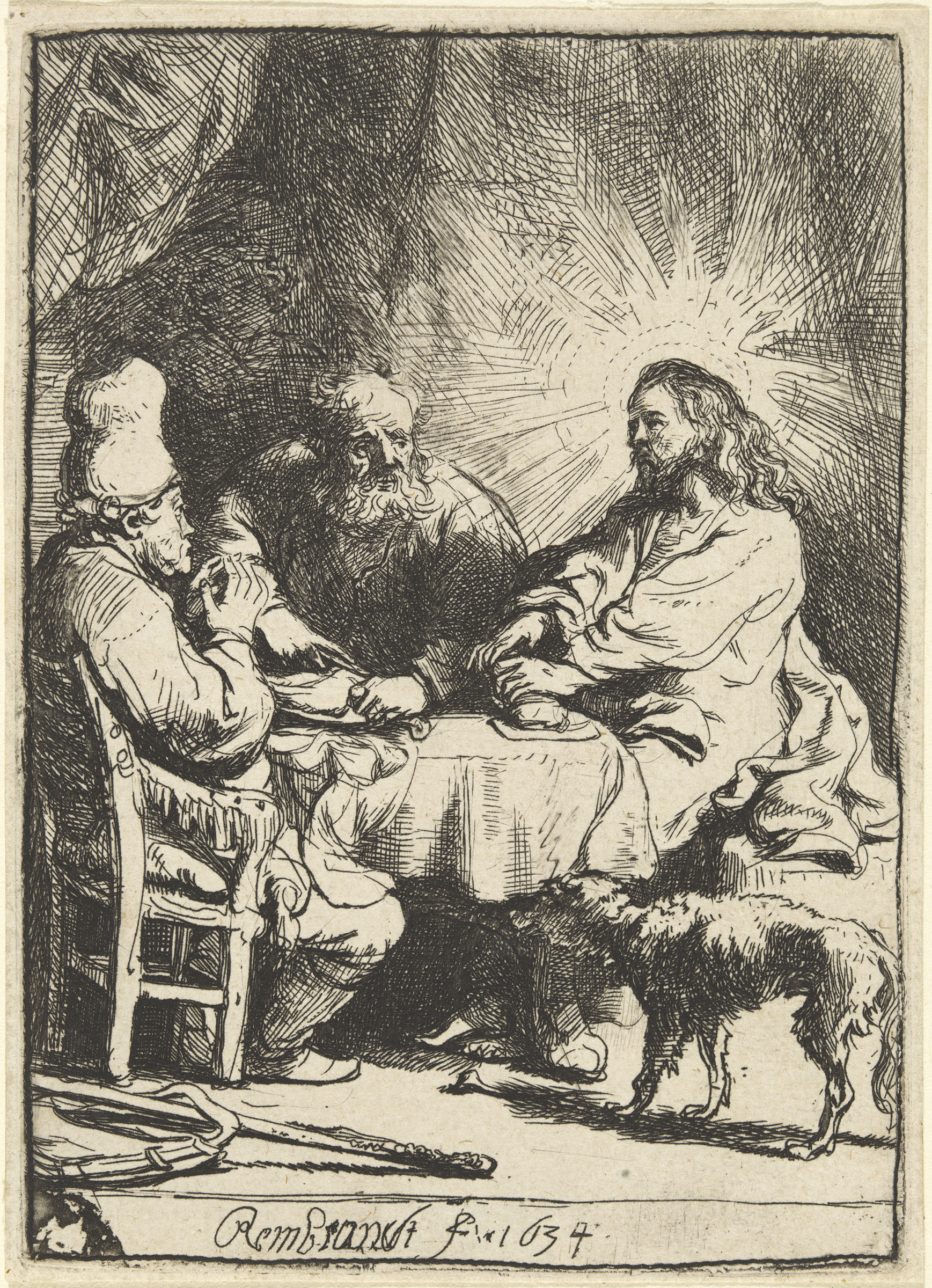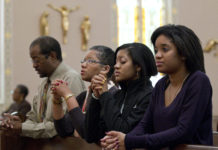

In the aftermath of Jesus’ violent death by crucifixion, His disciples were left shaken and doubtful. The risen Jesus’ appearances to His disciples moved them from fear to hope, and from doubt to faith.
A highpoint in the disciples’ encounter with the risen Lord would unfold during the journey to Emmaus and culminate in the supper at Emmaus.
The journey to and supper at Emmaus is described by St. Luke in Chapter 24, verses 13-35. Jesus joins His two disciples as they walk to Emmaus while they have a lively discussion about the meaning of the Scriptures.
On this journey they were prevented from recognizing Jesus until they rest after the heat of the day’s walk. Then, as Jesus breaks bread with them in the cool of the evening, “their eyes were opened and they recognized him” (v. 31).
Rembrandt, the master Dutch painter of the 17th century, captures that dramatic spiritual moment when the disciples come to see Jesus with the eyes of faith. In a remarkable etching, completed in 1634, titled “Christ at Emmaus: The Smaller Plate,” Rembrandt conveys the drama of this Easter moment.
He also invites us to sit at the table of the supper at Emmaus and to see with the same eyes of faith that Jesus is truly present in the breaking of the bread.
The small ordinary room holds three figures — Jesus and two disciples — crowded around a simple round table covered with cloth. In the lower right, a dog, symbol of fidelity, evokes the ordinariness of the scene.

The two disciples have just walked with the stranger on the road to Emmaus. They are worn out from their journey. They have heard Jesus’ words but do not completely grasp the meaning of His teachings on Scripture.
In a way that only a master artist can, Rembrandt depicts the dramatic moment when Jesus is about to break bread. His hands cover the loaf that sits on a plate before him. The two disciples are taken aback in surprise in this moment of spiritual illumination.
The disciple on the left draws his hands into a gesture of prayerful wonder. And the disciple in the middle looks intently at Jesus with eyes of faith and love.
Lines of radiating light from the head of the risen Lord illuminate the entire scene. We are told only that the disciples’ eyes were transformed as they said to one another, “Were not our hearts burning as He spoke to us on the way and opened the Scriptures to us?” (v. 32).
In the surprise and wonder of the disciples’ faces, we see that moment of “Eucharistic amazement” they must have felt at this Easter encounter with the risen Jesus.
The Eucharist is the gift par excellence of the risen Lord to the disciples and to the Church when His saving work is made sacramentally present again and again.
This masterpiece image of Easter faith is a visual homily reminding us that just as the disciples ate with the risen Lord at the supper at Emmaus, we too are invited to experience that “Eucharistic amazement” each time we are privileged to sit at the table of the Eucharist.
Then we too come to see Jesus with eyes of faith in the breaking of the bread.




![[VIDEO] Make Sunday feel like Sunday again](https://www.catholicsun.org/wp-content/uploads/2021/04/2021-YOUTUBE-BISHOP-MESSAGE-THUMBNAIL-ENGLISH-218x150.png)
